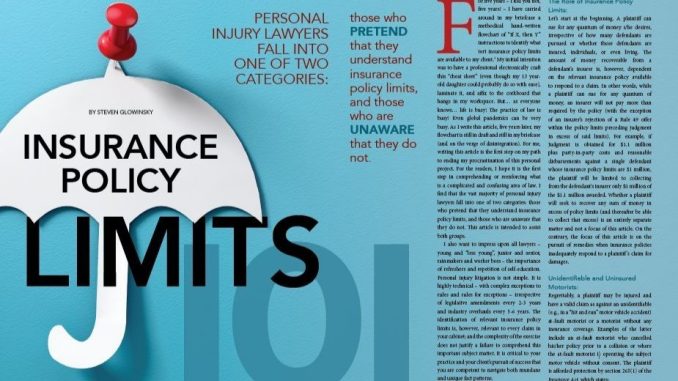
Insurance coverage limits are one of the most important yet often misunderstood aspects of any policy. They define the maximum amount an insurer will pay for a covered loss, and understanding how these limits work is essential to making sure you’re adequately protected. Whether you’re insuring a home, a vehicle, a business, or your own health, the coverage limit sets the boundary between what your insurer will handle and what you’ll need to pay out of pocket. It’s not just a number on a page—it’s a reflection of your risk exposure and financial strategy.
When people purchase insurance, they often focus on premiums and deductibles, which are more immediate and tangible. Coverage limits, however, tend to be overlooked until a claim is filed and the payout falls short. This can lead to unpleasant surprises, especially in situations involving large or unexpected losses. For example, if your homeowners insurance has a dwelling coverage limit of $300,000 but rebuilding your home after a fire costs $400,000, you’ll be responsible for the $100,000 difference. That gap can be financially devastating, and it underscores the importance of choosing limits that reflect real-world costs rather than just meeting minimum requirements.
There are different types of coverage limits depending on the policy. In liability insurance, the limit typically refers to the maximum amount the insurer will pay for legal defense and settlements. These limits can be split into per-occurrence and aggregate amounts. A per-occurrence limit applies to each individual claim, while the aggregate limit is the total amount the insurer will pay during the policy period. For instance, a general liability policy might have a $1 million per-occurrence limit and a $2 million aggregate limit. If your business is sued twice in one year, each claim could be covered up to $1 million, but the total payout for both claims cannot exceed $2 million. Understanding these distinctions is crucial for managing risk, especially in industries prone to litigation.
In property insurance, coverage limits are often tied to the value of the insured asset. This can be determined through replacement cost or actual cash value. Replacement cost coverage pays to rebuild or replace the property without deducting for depreciation, while actual cash value factors in wear and tear. Choosing between these options affects not only the coverage limit but also the amount you’ll receive in a claim. If your policy is based on actual cash value, the limit might seem sufficient on paper but fall short in practice. That’s why it’s important to regularly reassess the value of your assets and adjust your coverage accordingly.
Health insurance also involves coverage limits, though they’re often structured differently. Some policies have annual or lifetime maximums, which cap the total amount the insurer will pay for covered services. While many modern health plans have moved away from strict lifetime limits due to regulatory changes, caps can still apply to specific services or treatments. For example, a plan might limit physical therapy to 20 sessions per year or impose a maximum benefit for mental health care. These limits can affect access to care and out-of-pocket costs, making it essential to review the fine print and understand what’s included.
Auto insurance presents another layer of complexity. Liability coverage, which pays for damage you cause to others, is subject to state-mandated minimums, but those limits are often too low to cover serious accidents. If you’re found liable for a multi-vehicle collision or significant injuries, the costs can easily exceed the minimum coverage. In such cases, you could be personally responsible for the difference. Increasing your liability limits or adding an umbrella policy can provide additional protection. Similarly, comprehensive and collision coverage have limits based on the value of your vehicle, and if your car is totaled, the payout may not be enough to replace it unless you’ve chosen adequate limits.
Business insurance policies also hinge on coverage limits, which can vary widely depending on the type of coverage and the nature of the business. Commercial property insurance, professional liability, cyber insurance, and business interruption coverage all have specific limits that must be tailored to the company’s operations and risk profile. A small retail shop might need modest limits, while a manufacturing firm with expensive equipment and high liability exposure would require more robust coverage. The challenge lies in balancing cost with protection. Higher limits mean higher premiums, but underinsuring can lead to catastrophic losses that threaten the viability of the business.
It’s also worth noting that coverage limits interact with deductibles and coinsurance clauses. In some policies, especially commercial ones, coinsurance requires the insured to carry coverage equal to a certain percentage of the property’s value. If the coverage falls short, the insurer may reduce the payout proportionally. This can catch policyholders off guard, particularly if property values have increased and the policy hasn’t been updated. Regular reviews and appraisals can help ensure that coverage limits remain aligned with actual needs.
Ultimately, insurance coverage limits are not just technical details—they’re strategic decisions. They determine how much financial protection you have in place and how much risk you’re willing to retain. Choosing the right limits requires a clear understanding of your assets, liabilities, and potential exposures. It also involves thoughtful conversations with insurance professionals who can help assess your needs and recommend appropriate coverage. In a world where uncertainty is constant, having the right limits in place can mean the difference between a manageable setback and a financial crisis. It’s about being prepared, not just insured.